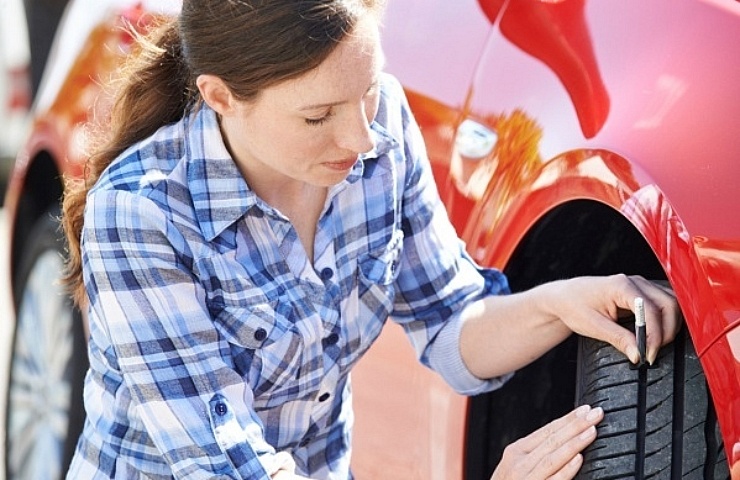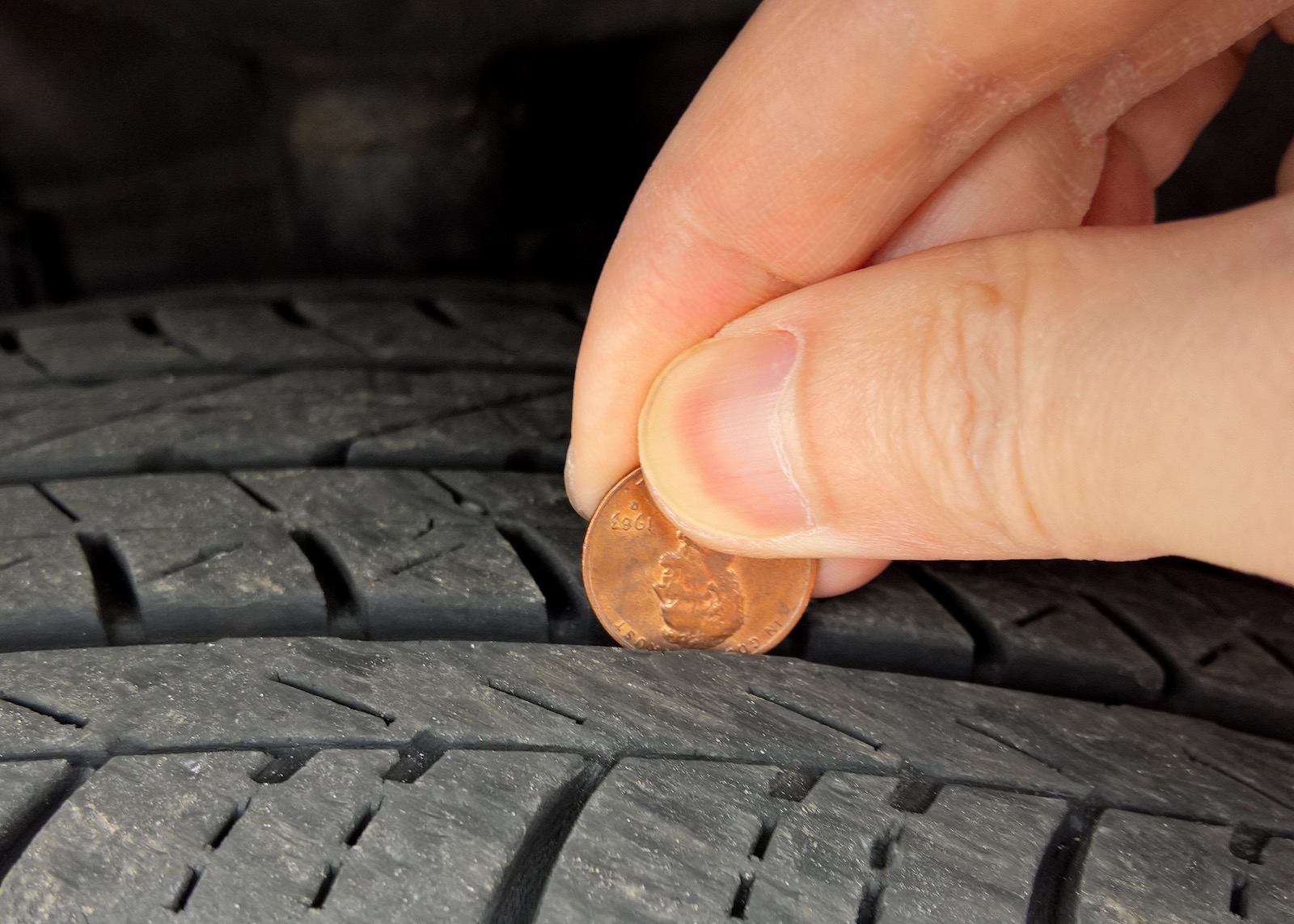Contents
Why Is Tread Depth Important?
Tread depth is the vertical distance between the highest point on the tread’s pattern to the lowest point in the pattern’s grooves. Tread also channels water out from under tires to prevent hydroplaning. Safe braking, accelerating, and steering all require traction between the tires and the road surface. With use, tread wears down, compromising these essential functions.
Shop now for tiresOnce a month—or before you embark upon long road trips—check your tires for wear and damage. By measuring tread depth, you’ll know if you should replace your tires to avoid dangerous loss of traction.
How to Make Sure Your Car’s Tread is Road Ready
There are three common methods for measuring tire tread depth.
- Checking each tire’s tread wear indicator bars
- Measuring with a tire tread depth gauge
- Using the penny test
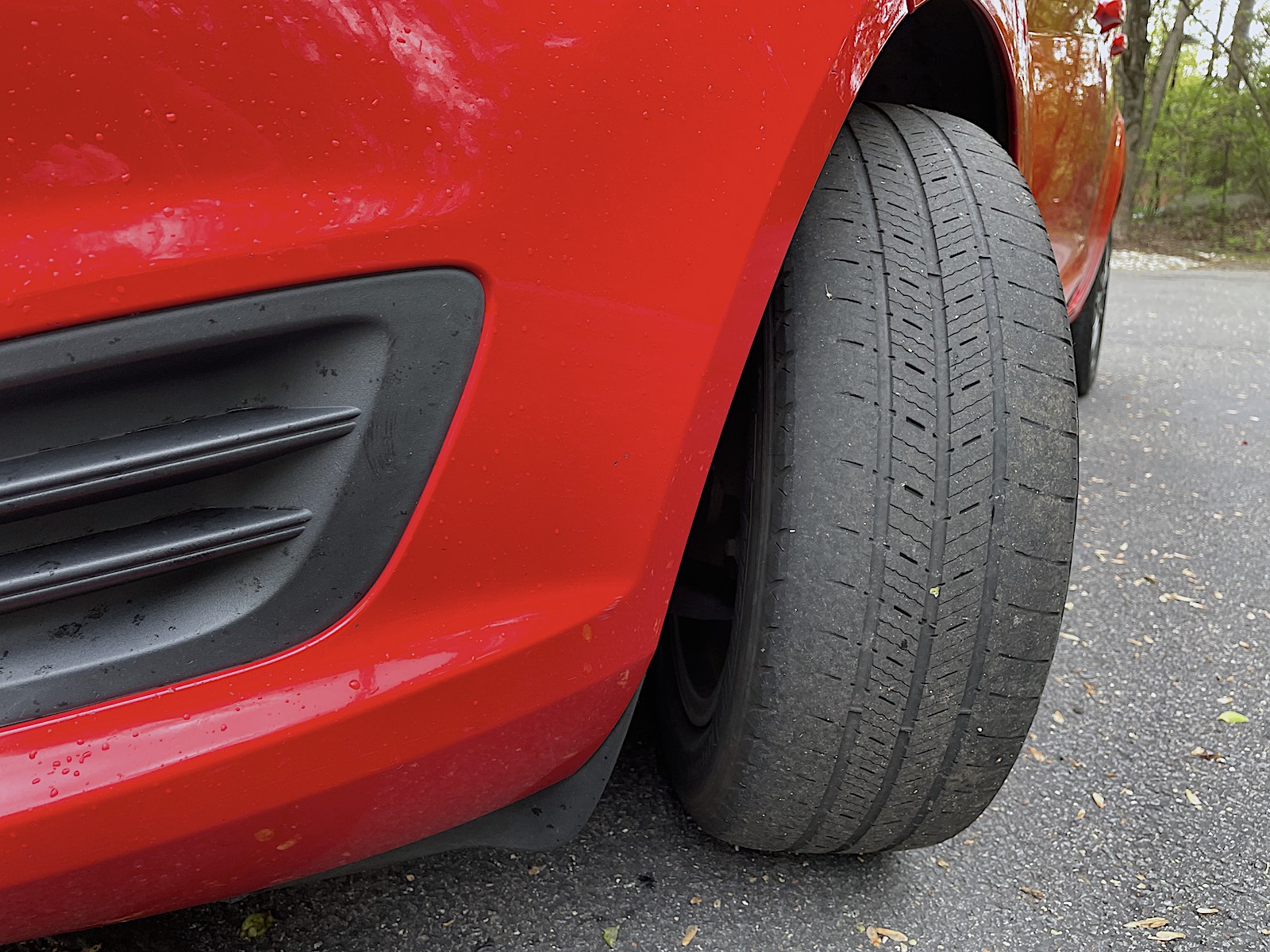
Tire tread depth can vary from side to side. This tire needs to be replaced, due to uneven wear.
Whichever method you use, check the tread depth at various points around the tire’s circumference. You should use the smallest measurement as the basis for your decision about replacing tires.
Using the Indicator Bars
The easiest way to check tire tread depth is to examine the tread wear indicator bars. Chunks of rubber span the tread grooves at different points around the tire.
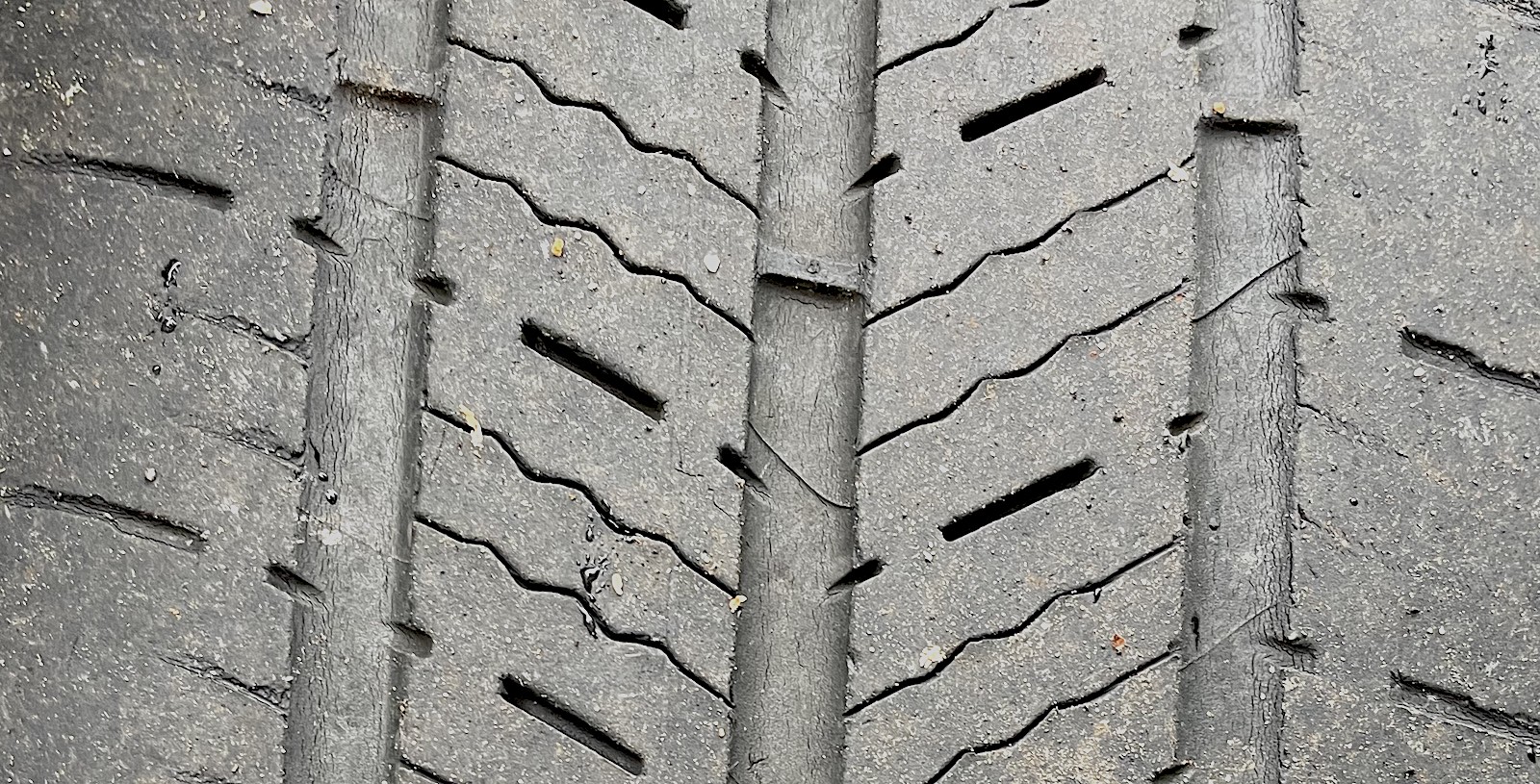
The tire wear indicators on this Michelin Defender say it’s time for a new set.
The height of these bars is 2/32 of an inch above the lowest point of the groove. The U.S. Department of Transportation (DOT) recommends replacing tires when the tread is at this depth. If the tire is flush with any of the tread wear indicator bars, it’s time to replace it.
Gauging Tread Depth
You can also use a tire tread depth gauge. The most common model is a graduated probe, which you can easily find on eBay. The graduated probe has a thin, retractable rod, a perpendicular foot, and a cylinder with measurements.
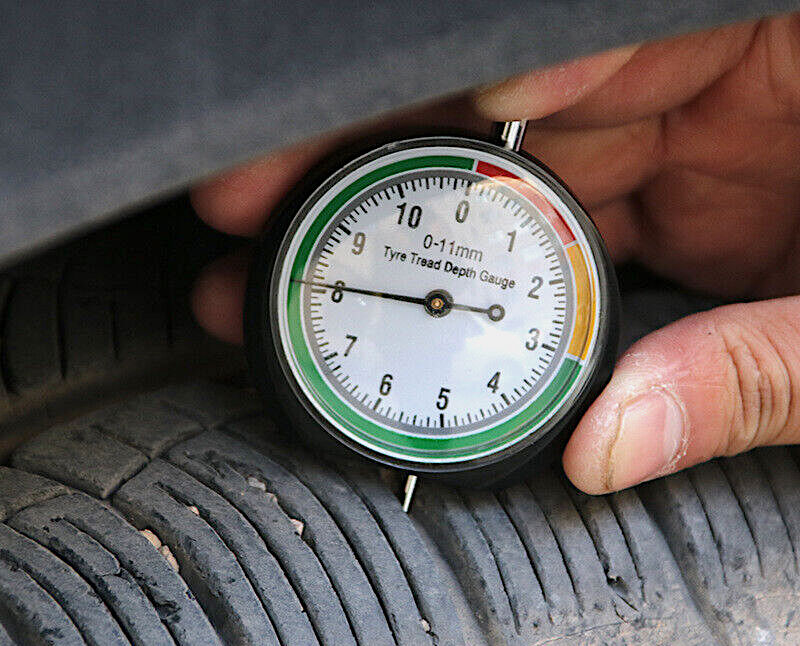
Analog tire tread depth gauge
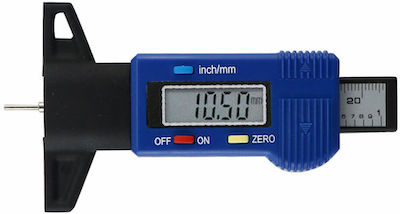
Digital tire depth gauge
To use the tire tread depth gauge, fully extend the rod and insert it into one of the grooves. Push down the foot of the gauge until it rests firmly on two elevated ribs of the tread on either side of the groove. The shaft with the measurements will slide up as you push the foot down and show the tread depth. You’ll see measurements in both 32nds of an inch and in millimeters. Note the depth and repeat the process at various points on the tire, taking the smallest reading as the definitive one.
The Penny Test
Grab an Abraham Lincoln penny and put your tire to the test.
- Hold the penny so the engraving of Abraham Lincoln’s head points down. Insert the penny into one of the tread’s grooves, with the head facing you.
- If any part of Lincoln’s head is covered by the tread, you’re driving with a safe amount of tread.
- If you can see a space between the top of Lincoln’s head and the tread, or if the tread is flush with the top of Lincoln’s head, this means your tread is worn the tires should be replaced.
This works because distance between the top of Lincoln’s head and the edge of the coin is 2/32 of an inch. However, many tire professionals recommend replacing tires when tread depth reaches 4/32 of an inch. In this case, use the quarter test, because that is exactly the distance from the top of Washington’s head to the edge of a quarter.
Shop now for tires
